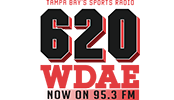Dummy Moves
The dummy move, or pump fake, is a maneuver sharp bettors have used since the advent of the modern sportsbook. Simply put they’ll bet the “wrong” side early in the week to start a number moving only to come back over the top with their true position closer to post time…and you thought bookmakers had it easy.
Normally the booking curve for a sporting event starts with low limits when virgin lines are first released allowing for higher limits to be accepted as the market matures (note all sports are a bit different, football with a week between games provides the best example). Before a betting pool has settled, bigger bets create a larger ripple effect meaning oddsmakers are likely to make stronger moves early when a wager comes from a known customer. Think of it like throwing a giant boulder into a small retention pond (bets on Monday) compared to that same boulder thrown into the Pacific Ocean (bets on Sunday).
During the week money enters the betting pool for each game and lines begin to stabilize. While it’s not true for all books (some take the same size bets at any point), limits are typically increased Thursday/Friday. This is the time big bettors may start tipping their hand as to true positions. The reason behind raising limits as the week progresses is straightforward; better information becomes readily available allowing sportsbooks to operate on a level playing field (relatively speaking) with sharper bettors, eliminating potential surprise injuries or changes in personnel sharps knew about since Monday.
With the proliferation of sports screens it’s actually become easier for sharp bettors to dummy up the market. They know full well certain books will mirror one another so rather than dummy up numbers at 6-8 books there’s a very real possibility placing a bet at 2 of them means everyone else falls in line. Instead of buying a half point on a game close to kickoff, a smaller wager at 2 books early in the week can move the entire betting market from 3.5 to 4 making that half point a hell of a lot cheaper than spending .10 cents at 15 shops the day of the game. When books move off of wagers accepted at other shops this term is referred to as “moving on air,” not always the most flattering term to use around bookmakers.
The logic here isn’t difficult to understand but it’s by no means easy to execute for bettors without adequate resources. Line movement is a science that takes years to understand. For those just getting started in the wonderful world of handicapping the first thing I’ll tell you about watching numbers is to simply observe. If anyone has read Blink by Malcolm Gladwell, the concept of thin slicing is as applicable in sports betting as any other profession. The more you train yourself to recognize situations, you’ll know when a line move doesn’t look or feel real allowing you to capture the market at it’s peak before the price starts moving again. Understanding what the betting board tells you has been known to cause ulcers until you’ve trained yourself to understand techniques, recognize patterns, or can obtain the best information out there. Always keep perspective and never stop learning, it’s the one constant in sports betting that withstands the test of time.












